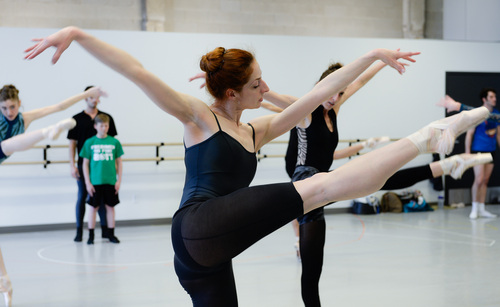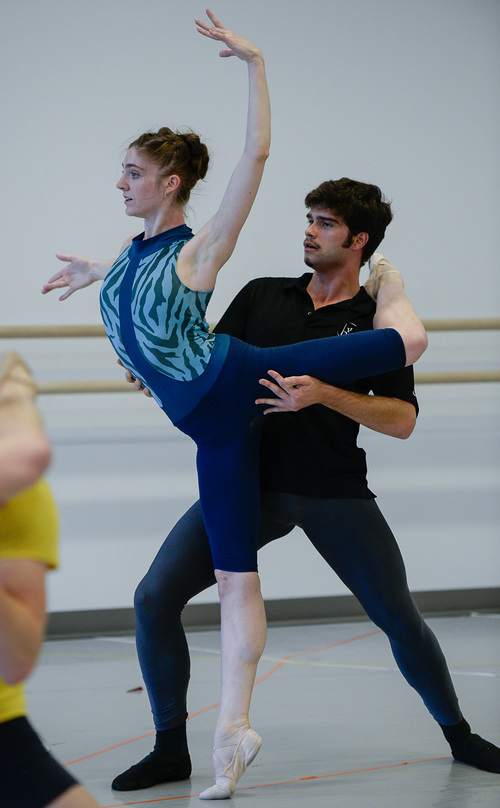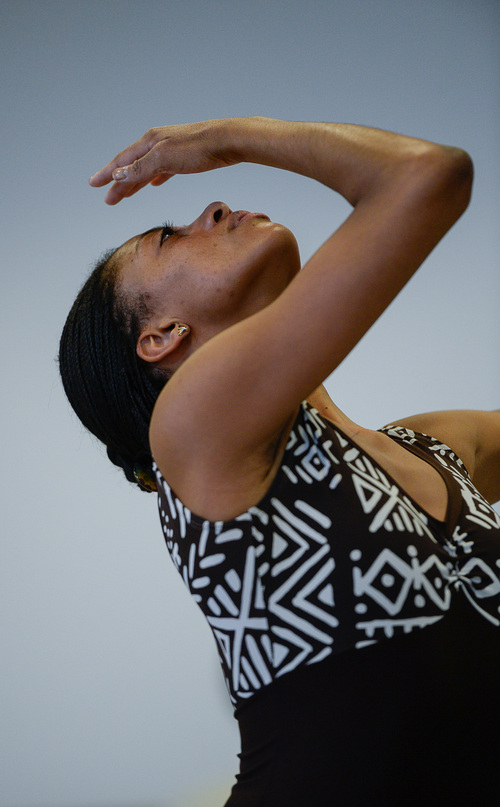This is an archived article that was published on sltrib.com in 2014, and information in the article may be outdated. It is provided only for personal research purposes and may not be reprinted.
If good dance is a moving experience that transports us to places we've never been before, then great dance is an ambush: wholly in body, hovering inches above our seat, creating a popsicle-cold brain freeze.
Choreographer and Ballet West artist in residence Nicolo Fonte transfixed the Capitol Theater audience on opening night of his world premiere of "The Rite of Spring" — not because Fonte's interpretation of Stravinsky's 1913 score is shocking but because it is so brilliantly subtle.
The sophistication of Fonte's works holds its own against such famously prolific choreographers as American Ballet Theater's current artist in residence Alexei Ratmansky. In 2012, I attended Ballet Theater's premiere of Ratmansky's "Firebird" set to Stravinsky's 1910 score at New York City's Lincoln Center for the Performing Arts. In comparison, it lacked the articulated, innovative and highly modern movement I saw in Fonte's "Rite." In fact, unlike some of his contemporaries, Fonte never pushes against the music or gets trapped in the matrix of the story.
In every aspect, Fonte's "Rite" is about creating a context for a score that reminds us of the authority of a live orchestra.
Ballet West's David Heuvel's costumes are flattering and retain the dancers' identities, unburdened by overly wrought characters. It is no surprise that when I called Heuvel weeks ago to interview him about his imaginative Ballet West II "Little Mermaid" costumes he laughed, assuming I would be calling about the black pleather and flesh-colored mesh for "Rite." Now I wish I'd asked how he designed costumes that are hotly primitive and modest at the same time.
The deconstructed metal set by Michael J. Mazzola places the ballet in a timeless context, offering spaces for ingenious choreography such as dancers peeking over the set from behind. Visual elements hang above the stage — a free-floating disc can be interpreted many ways, and I choose to believe it imbues wisdom and intuition into this particular ballet.
To adequately compliment this cast of dancers, I would have to print the entire program. Leads Katlyn Addison and Christopher Anderson bring out the fearlessness in each other; Christiana Bennett and Beau Pearson create crystalline shapes in space; Katherine Lawrence explodes in restrained passion; Allison DeBona is an arresting theatrical performer; Sayaka Ohtaki informs the work with her musicality; Chris Sellars and Rex Tilton are powerfully present. One of the most gripping episodes in the 30-minute piece is the trio with Tom Mattingly, Alexander MacFarlan and Zachary Prentice.
At the center of the ballet is the talented young Ballet West Academy student-dancer Henry Winn. His character functions as a counterpoint and intriguing transitional choreographic element. The figure sets a menacing tone, adding tension to the ballet. Winn dances the part with confidence.
The first ballet on the program was Jirí Kylián's "Forgotten Land" (1981), a ballet that demands the strength in the midst of the utmost grace. Soloist Jacqueline Straughan finds the sweet spot of Kylián's elegant balance of poetry and athleticism. The entire cast expertly executed Kylián's elaborate signature partnering — a Rube Goldberg machine of collaboration.
Between Kylián's statement on war and strife, and Fonte's contemporary masterwork, was an arcane Balanchine work, "Divertimento No. 15." It is a technical challenge for this company, although soloist Emily Adams' early training at Balanchine's School for American Ballet stood out strongly, as did her performance in "Forgotten Land." Artist Chase O'Connell consistently drew my eye for his ease, strength, line and partnering. And what seemed at first a bit ambitious for Artist Jenna Rae Herrera turned out to be wonderfully within her reach.
Review: Ballet West's 'Rite of Spring'
"The Rite of Spring" is an absolute must see. The evening of Jirí Kylián's "Forgotten Land" (1981) and Balanchine's "Divertimento No. 15" is a balanced program and a challenge for the company, even if it makes for a longer-than-usual performance.
When • Continues Wednesday-Saturday, April 16-19, 7:30 p.m.; 2 p.m. matinee Saturday, April 19.
Where • Capitol Theatre, 50 W. 200 South, Salt Lake City
Tickets • $24-$74; ArtTix.org
Running time • Two hours and 30 minutes with two 10-minute intermissions.











